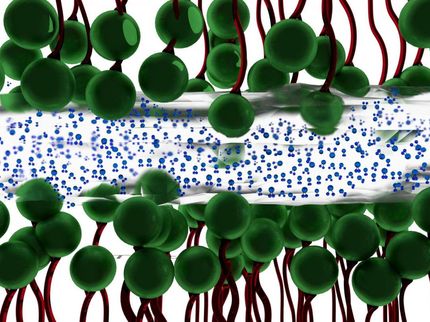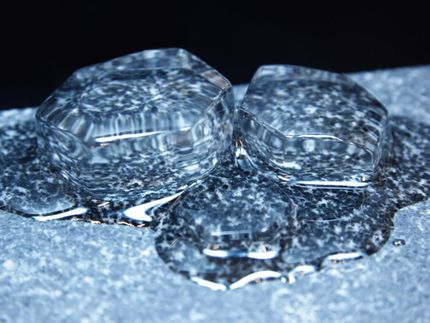Unusual snail shell could be a model for better armor
Unique structure helps dissipate energy that would cause weaker shells to fracture
New insights about a tiny snail that lives on the ocean floor could help scientists design better armor for soldiers and vehicles, according to MIT researchers.
A team of materials scientists, led by MIT Associate Professor Christine Ortiz, report that the shell of the so-called "scaly-foot" snail is unlike any other naturally occurring or manmade armor. The study suggests that its unique three-layer structure dissipates energy that would cause weaker shells to fracture.
Copying various aspects of the structure could help scientists design better armor for military use, says Ortiz, who is a member of MIT's Institute for Soldier Nanotechnologies. The new study was partly funded by the Army and the Department of Defense and will appear in the Proceedings of the National Academy of Sciences.
Ortiz' attention was drawn to this interesting gastropod in 2003, when its discovery was first reported. The snail lives in a relatively harsh environment on the floor of the Indian Ocean, near hydrothermal vents that spew hot water. Therefore it is exposed to fluctuations in temperature as well as high acidity, and also faces attack from predators such as crabs and other snail species.
When a crab attacks a snail, it grasps the snail's shell with its claws and squeezes it until it breaks — for days if necessary. The claws generate mechanical energy that eventually fractures the shell, unless it is strong enough to resist.
In the new paper, Ortiz and her colleagues, including MIT Dean of Engineering Subra Suresh, report that the shell of the hot vent gasotropod has several features that help dissipate mechanical energy from a potential penetrating predatory attack. Of particular importance is its tri-layered shell structure, which consists of an outer layer embedded with iron sulfide granules, a thick organic middle layer, and a calcified inner layer.
Most other snail shells have a calcified layer with a thin organic coating on the outside.. In the scaly foot gastropod, simulations suggest that the relatively thick organic middle layer can absorb much energy during a penetrating attack. It may also help to dissipate heat and thermal fluctuations exhibited near hydrothermal vents.
How they did it: Ortiz and her colleagues measured the mechanical properties of the snail shell using a machine called an indenter, which has a diamond tip. By measuring the force applied to the shell, and the shell's resulting displacement, they can calculate its mechanical properties.
Next steps: Ortiz is looking at host of natural exoskeletons in order to extract protective design principles, including chitons, urchins, beetles, and armored fish.
Other news from the department science

Get the chemical industry in your inbox
By submitting this form you agree that LUMITOS AG will send you the newsletter(s) selected above by email. Your data will not be passed on to third parties. Your data will be stored and processed in accordance with our data protection regulations. LUMITOS may contact you by email for the purpose of advertising or market and opinion surveys. You can revoke your consent at any time without giving reasons to LUMITOS AG, Ernst-Augustin-Str. 2, 12489 Berlin, Germany or by e-mail at revoke@lumitos.com with effect for the future. In addition, each email contains a link to unsubscribe from the corresponding newsletter.
























































